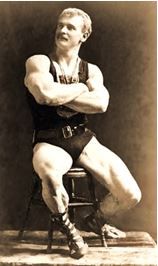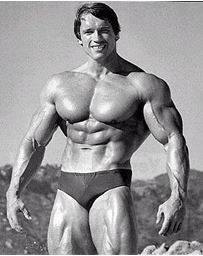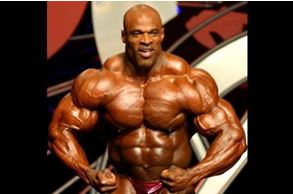The art of competing in bodybuilding summary
Bodybuilding is a sport that encompasses many components such as: health, beauty, training, nutrition, poses, etc. It is one of the few sports that are very strict with the objective of training in conjunction with the caloric measurement of meals and their energy component. The bodybuilder must train his body every day to the maximum as if it were his last day of training before the competition.
Keywords: Bodybuilding. Hypertrophy. Symmetry. Feeding.
Introduction
The human body is always in constant change and in constant movement, in short, in evolution. The movement of the body and the stress it receives will result in physical changes that will depend to a certain extent on the consistency and load of stimuli in the different parts of the body.
The increase has also been marked in women, in which there is a high quality of competitors, also showing great discipline when it comes to getting on stage.
This sport is generally based on anaerobic exercises and consistent in training. It is an activity that is usually carried out in gyms, where sometimes you train up to twice a day.
Bodybuilding is a physical activity aimed at the maximum development of muscular hypertrophy (of the visible musculature) of the human being.
To achieve this hypertrophy, skeletal muscle mass has to be regulated by the balance of protein synthesis and degradation, increased by exercise-induced physical activity, causing greater activation of protein synthesis, resulting in muscle hypertrophy (Ito et al. al., 2013).
Muscle rest is a vital process for the process of muscle hypertrophy. Muscle grows when we allow it enough rest to recover from the stress and strain it suffered in training. Various studies suggest at least 72 hours of rest for each muscle, in conjunction with a daily sleep between 6 to 8 hours.
Not only muscle size or hypertrophy is important to be successful in this sport, other components are also worked on such as: muscle definition, muscle symmetry and muscle details.
Another important component in bodybuilding and the most demanding of all is food. It is categorized in nutrition and supplementation. Calorie intake; either hypercaloric or hypocaloric (depending on the phase of periodization), they are based mainly on the consumption of carbohydrates, proteins and fats.
This, together with training (calorie expenditure), will directly influence the athlete on what foods he has to consume, how much and at what time of the day he can consume it. It also emphasizes what foods should not be eaten.
However, this discipline has all the necessary components to be identified as a sport, since it has: competitions, awards, categories, national federations and international federations such as the International Federation of Bodybuilding and Fitness (IFBB).
This sport is distinguished from many sports such as: weightlifting, powerlifting, etc. This is because bodybuilding is based on the physique and also on the aesthetics of the body. Unlike other sports, where they seek to improve physical performance such as: weight, load, distance, height, time, etc.
Bodybuilders have several characteristics and qualities that are very strict to be able to get on the stage. Among them: discipline, dedication, effort, consistency, concentration, courage, pride, purpose, etc.; but above all, love for this demanding sport.
Origin and art of Bodybuilding Since ancient times, the human body has always been a subject of beauty, power, being the strongest, going further, going further, etc. All this to be printed in a drawing, figures, paintings and even sculptures. These artists looked for perfection and details in their works, since this meant their authentic stamp.
The body of many men became immortalized in these works. Many of them were gladiators and some even considered them as gods for their spectacular bodies and for being winners of multiple wars.
Bodybuilding has its first manifestations in figures of Greek vases; Apparently, hand weights (as ballast) were already used to perform jumps or exercises in order to increase the strength and length of the jump.
According to López et al. (2010), dates back to the time of Ancient Greece and Rome where athletes trained with weight and resistance, to later compete in the Olympic Games or fight in the arena as gladiators in the great Roman coliseum.
At that time, bodybuilding was about behaviors aimed fundamentally at the development of strength or its size with the objective of survival as a clear purpose, or as religious rites in specific festivities.
Like a sculpture, the bodybuilder must be: groomed, molded, sculpted, polished, honed, detailed, etc. To a great extent, it must be a different and unique work to have an authenticity.
Although the human body carries the same limbs, muscles, joints, etc.; the difference will be the sculptor behind the molded body, who has done it with his unique details, thus marking his “signature” on the body of the athlete. Bodybuilding looks beyond a good physique; seek perfection. Like the artist in his due work; coaches and competitors do this by working on: muscle size (hypertrophy), muscle definition, muscle symmetry, muscle detail, among other things.
These athletes personified physical balance according to the artists and philosophers of the time, who affirmed that physical perfection was the closest thing to a god.
Bodybuilding Background
The first sense of the bodybuilder is that of transformation, physical improvement, a body as an informed mass will become sculpted, carved, in an act of modeling that pursues beauty (Ferrús Antón, 2005).
In the process of bodybuilding and modern competition, there are several illustrious figures who were important figures in the evolution of this sport as we know it today.
First, it is worth mentioning Eugen Sandow (1867-1925), who was the first to make exhibitions in which he showed his musculature.

Sandow is known as the father of bodybuilding .
in marketing mechanical equipment for performing exercises such as weights and pulleys
Bodybuilding had a great impact and popularity in the 1950s and 1960s, as more sophisticated equipment and apparatus began to appear. There was also a lot of advertising for comics and comic book super heroes, highlighting the impressive bodies of these heroes. In addition, magazines specialized in exercises and bodybuilding appear for the first time.
The decades (1940-1970), is known as the Golden Age ("The Golden Age"). It is called that because it was the moment when bodybuilding reached its maximum development and popularity. New research was also developed in the areas of nutrition, supplementation and training.
At this time several recognized figures emerge such as: Vince Gironda, Frank Zane, Lou Ferrigno, Sergio Oliva and for many, the best bodybuilder of all time in Arnold Schwarzenegger.

Arnold Schwarzenegger. Seven-time Mr. Olympia champion (1970-7975 and 1980)
Due to the recognition and impact of these athletes and others in bodybuilding, after the 1970s, they began to be hired as actors in motion pictures. Movies like " The Incredible Hulk" (1978), "Conan the Barbarian" (1982), "The Terminator" (1984) and "Predator" (1987), were successful and starred bodybuilders.
However, despite the popularity of this sport, bodybuilding suffered a decline in the 1980s and 1990s.
However, it was not until the early 2000s that bodybuilding resumed its growth and popularity with the participation of a new group of elite bodybuilders, most notably Ronnie Coleman.

Ronnie "The King" Coleman. Eight-time consecutive Mr. Olympia champion (1998-2005)
Modern Bodybuilding Competition
Bodybuilding competitions are practiced by men and women, so much so that one of the categories is mixed. In this way, bodybuilding is one of the few sports where there is participation of both genders competing together in the same category.
Bodybuilding competitions are articulated on the composition of poses, a body that in its stillness must captivate a gaze, a body that achieves an instant of perfection, as a living statue, as a body worthy of being immortalized in the portrait. Metaphor of an embalmed corpse that wants to parade through time and death. Body that exists because someone else looks at it. (Ferrús Anton, 2005).
This sport is divided into two tests: compulsory poses and free poses.
In the obligatory or mandatory poses test, the general silhouette and the shape of the different muscle groups are important. Judges should favor competitors with harmonious and classic physiques, also looking for good posture, athletic disposition and correct harmonic structure (good build, broad shoulders, high chest, physiological spinal curves, limbs and trunk in good proportion, straight legs, etc. ).
In addition, good skin tone without spots, acne or tattoos, which are considered by the judges as skin defects, well-groomed hair, well-shaped feet and fingers, etc.
The athlete has to demonstrate his musculature and convince the public and the judges that he is the best body of all, with a hypertrophied, symmetrical, detailed body structure, etc.
The obligatory or mandatory poses are classified into seven different poses in this specific order:
Head on. Double biceps.
Head on. back expansion.
Profile. Chest expansion.
Backwards. Double biceps.
Backwards. back expansion.
Profile. Tricep extension.
Head on. Abs and thighs.





0 Comments